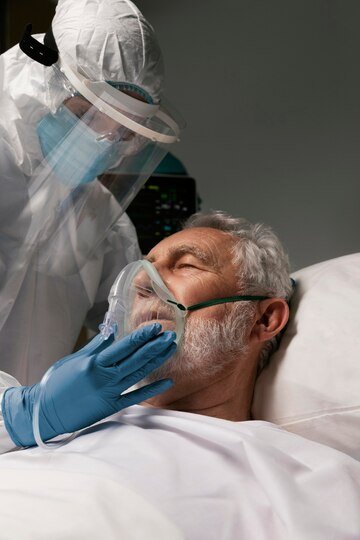CPAP masks are a key component in treating sleep apnea, a disorder that causes breathing interruptions during sleep. If you’ve been diagnosed with sleep apnea, you may have been advised to use a CPAP (Continuous Positive Airway Pressure) machine. But the device alone isn’t enough—the right mask plays a vital role in ensuring effective therapy.

What is CPAP?
CPAP stands for Continuous Positive Airway Pressure. This therapy delivers a steady stream of air through a mask into your airways, keeping them open while you sleep. It’s commonly used to treat sleep apnea, a condition where breathing repeatedly stops and starts during sleep.
The Role of CPAP Masks in Treating Sleep Apnea
CPAP masks are essential in this therapy because they form the connection between the machine and your airways. A well-fitting mask ensures that air pressure is delivered efficiently and comfortably, minimizing disturbances to your sleep.
Types of CPAP Masks
Choosing the right CPAP mask can feel overwhelming because there are several options available. Each type has its own features and benefits tailored to different needs.
Nasal Masks
Nasal masks cover the nose and are the most commonly used type. They are designed for people who breathe primarily through their nose.
- How Nasal Masks Work
These masks deliver air to the nasal passages. They’re generally compact, making them a comfortable choice for many users. - Pros and Cons of Nasal Masks
Pros: Lightweight, ideal for active sleepers
Cons: Not suitable for mouth breathers, can cause nasal dryness
Full-Face Masks
Full-face masks cover both the nose and mouth. They’re ideal for individuals who breathe through their mouth during sleep.
- How Full-Face Masks Work
These masks provide a seal over both the nose and mouth, ensuring that air enters your airways even if your mouth opens during sleep. - Pros and Cons of Full-Face Masks
Pros: Ideal for mouth breathers, effective for higher air pressure
Cons: Larger in size, can feel bulky
Nasal Pillow Masks
Nasal pillow masks are the smallest option. They rest on the nostrils rather than covering the nose.
- How Nasal Pillow Masks Work
Air is delivered directly into the nostrils through soft pillows that create a seal. - Pros and Cons of Nasal Pillow Masks
Pros: Lightweight, offers more visibility, ideal for people with facial hair
Cons: Not suitable for high-pressure settings
Hybrid Masks
Hybrid masks combine the features of nasal and full-face masks, offering more versatility.
- How Hybrid Masks Work
These masks seal over both the nose and mouth but are smaller and more flexible than traditional full-face masks. - Pros and Cons of Hybrid Masks
Pros: Offers the benefits of both nasal and full-face masks, less bulky
Cons: Can be tricky to fit initially
Choosing the Right CPAP Mask
Finding the perfect mask can make a world of difference in how comfortable and effective your CPAP therapy is. Consider the following factors:
- Comfort and Fit: A comfortable mask ensures you’ll actually use it. The fit should create a tight seal without causing discomfort.
- Sleeping Position: Side sleepers may prefer nasal or nasal pillow masks, while back sleepers may do well with full-face masks.
- Breathing Style: Mouth breathers might need full-face masks, whereas nasal masks are perfect for nose breathers.
Benefits of Using CPAP Masks
When you find the right CPAP mask, the benefits are transformative:
- Improvement in Sleep Quality: CPAP masks help reduce sleep disruptions caused by sleep apnea.
- Reduction in Sleep Apnea Symptoms: Many users report feeling more rested and alert after regular CPAP use.
- Health Benefits: Treating sleep apnea can reduce risks associated with heart disease, stroke, and high blood pressure.
Challenges of CPAP Masks
While CPAP therapy is highly effective, some users experience challenges with masks, such as:
- Discomfort and Skin Irritation: Some masks may cause pressure sores or skin irritation. Switching to a different style or adjusting the fit may help.
- Air Leaks: Air leaks can make CPAP therapy less effective. Ensuring a proper seal and adjusting the straps can help resolve this issue.
Maintaining Your CPAP Mask
Proper maintenance is key to extending the life of your mask and ensuring effective therapy.
- Daily Cleaning: Wipe down your mask daily to remove oils and sweat.
- Weekly Deep Cleaning: Use warm water and mild soap for a thorough clean once a week.
- Replace the Mask Regularly: Masks should be replaced every 3-6 months, depending on wear and tear.
How to Adjust to CPAP Masks
For many, wearing a CPAP mask takes time to get used to. Here are a few tips to ease the transition:
- Start Slow: Wear the mask during the day while reading or watching TV to get used to it.
- Address Common Issues: If you experience discomfort, try different mask types or adjust the straps.
Common Myths About CPAP Masks
- Myth: CPAP masks are uncomfortable.
Fact: Modern CPAP masks come in a variety of sizes and styles, many designed for comfort. - Myth: CPAP masks are only for severe cases.
Fact: CPAP therapy can benefit anyone with sleep apnea, regardless of the severity.
Conclusion
Choosing the right CPAP mask is critical for successful sleep apnea treatment. Whether you prefer a nasal mask, full-face mask, or hybrid, there’s an option that will work for you. Don’t be discouraged by initial discomfort—most users find that after a short adjustment period, CPAP masks help improve their sleep quality and overall health.
FAQs About CPAP Masks
- Can I sleep in any position with a CPAP mask?
Yes, but some masks work better for side or stomach sleepers. - Do CPAP masks make noise?
Most modern CPAP masks are designed to be quiet. - Can I travel with my CPAP machine and mask?
Absolutely! Many CPAP machines are portable and come with travel cases. - How do I know if my CPAP mask is the right fit?
A good fit creates a seal without being too tight or uncomfortable. - How often should I replace my CPAP mask?
It’s recommended to replace your mask every 3-6 months for optimal performance. - You can see lates updates on: Thefsiblog



